30 vintage photos of people camping show how different it used to be
Camping didn't always involve fancy RVs, watching movies on iPads, or state-of-the-art campgrounds.
Camping has evolved from sleeping under the stars to camping out at music festivals and events.
These vintage photos show there's nothing more nostalgic than sleeping in a tent in nature.
While technology has been incredibly helpful in outdoor adventuring, making recreational camping simpler and more comfortable, there's something nostalgic about how basic the activity used to be.
The decked-out RVs people can now travel in can cost $20,000 to $100,000, but the price of luxury RVs can reach as high as $2 million, according to HomeGuide.
In the 1930s and following decades, however, recreational campers primarily set up simple tents or basic caravans to spend time with their friends and family outdoors. And today, simpler camping can be a great option for families wanting to spend time together — without spending a fortune — as the cost of living climbs.
These photos show what recreational camping used to be like. They might even inspire you to try it for yourself this summer.
Recreational camping looked different 100 years ago.
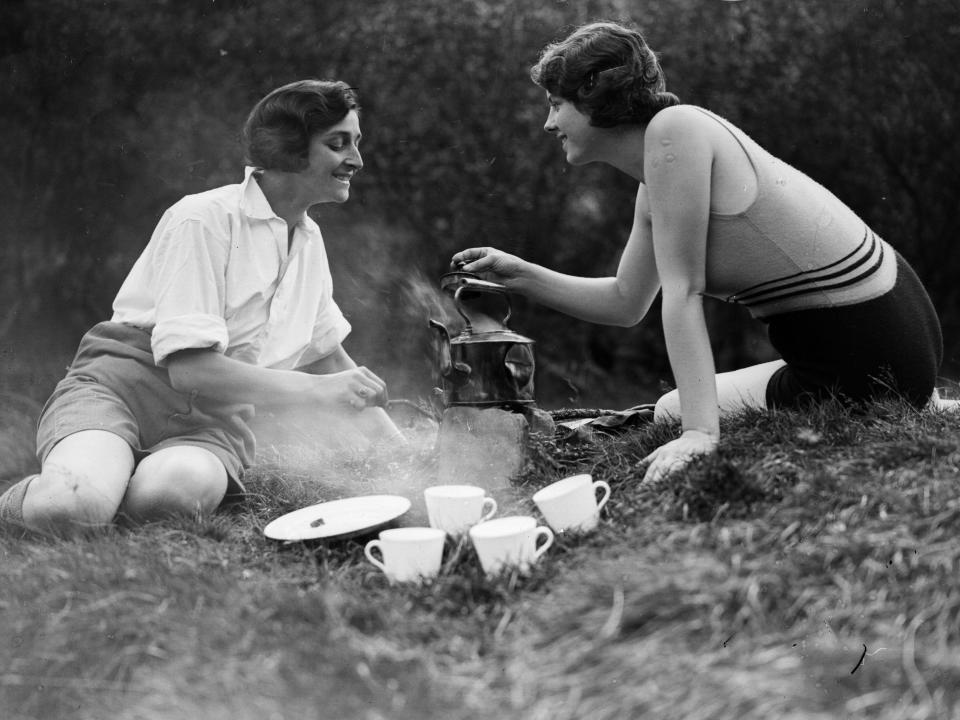
In 1940, the Regional Review called camping "an American tradition," according to a copy of the article shared by the National Park Service.
Starting in the mid-to-late 1800s, people camped for fun in North America, according to Britannica. As people increasingly sought to escape cities, organizations such as the Appalachian Mountain Club began to crop up. At the turn of the 20th century, books such as "The Camper's Handbook" continued to ignite interest, and throughout the century, organized camping grew in popularity.
In 1930, before the Great Depression really took hold, there were more than 3 million campers across the US, The Dyrt reported, citing Terence Young, the author of "Heading Out: A History of American Camping."
While the basic idea of camping was the same as we now know it — sleeping outdoors — the gear was markedly different.
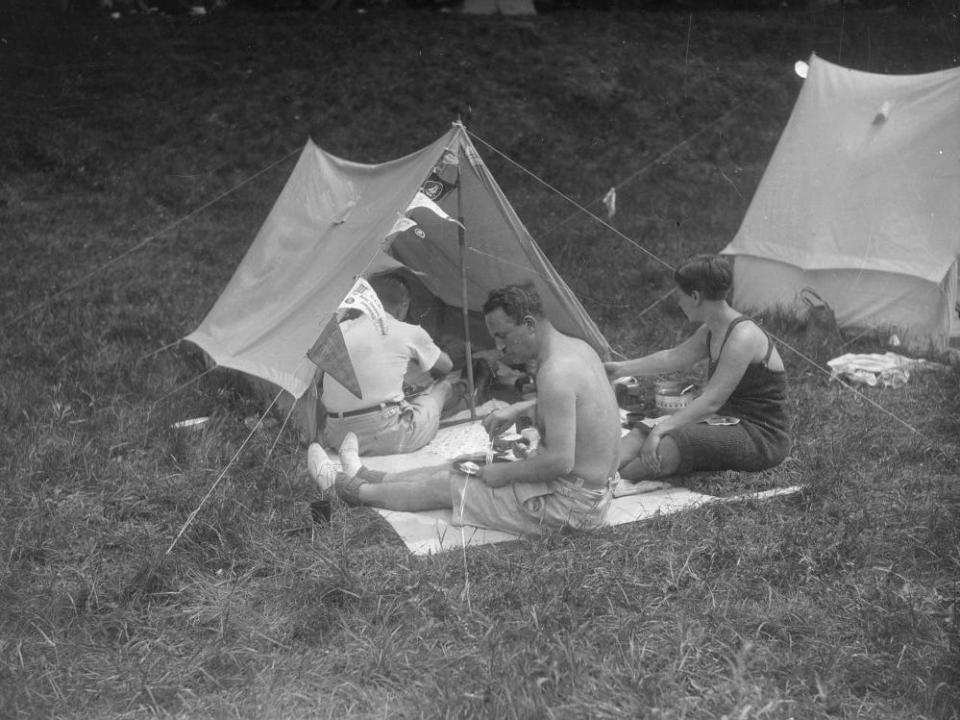
Camping originally just involved the campers, the outdoors, and some simple cooking ware. The shelter was simple, too: People would often sleep beneath a sheet held up by sticks and string.
If you went camping like this group in France in 1930, you were unreservedly experiencing nature.
These simple tents were used regardless of weather conditions.
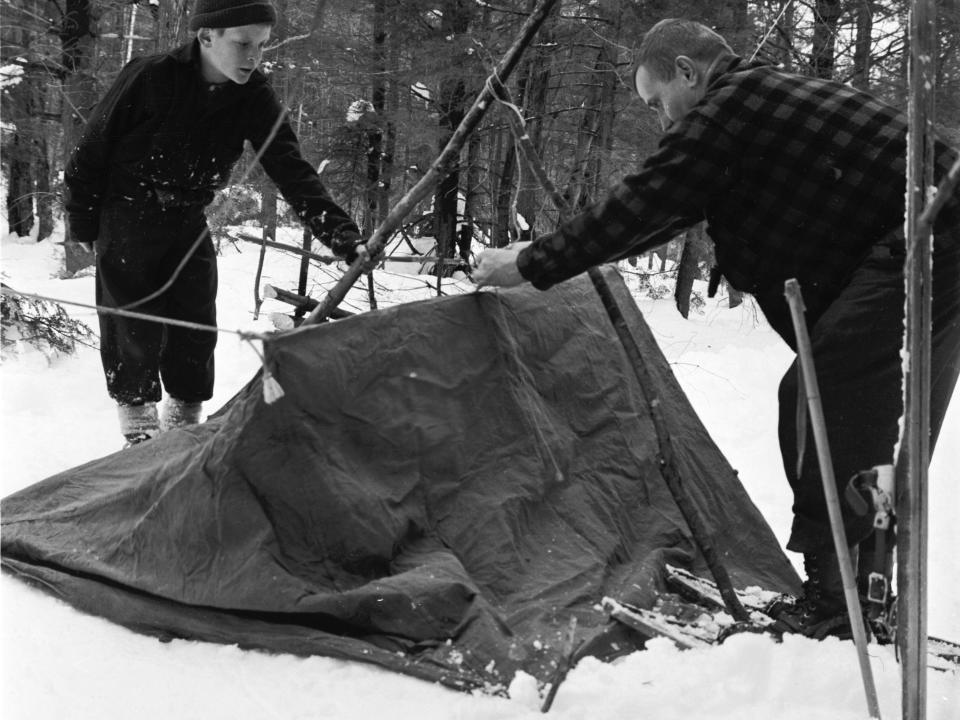
There was usually no electricity for miles, and campers had to make do with whatever heat sources they had — whether that be fires, blankets, or even huddling together for warmth.
The lack of technology made the experience much more authentic.
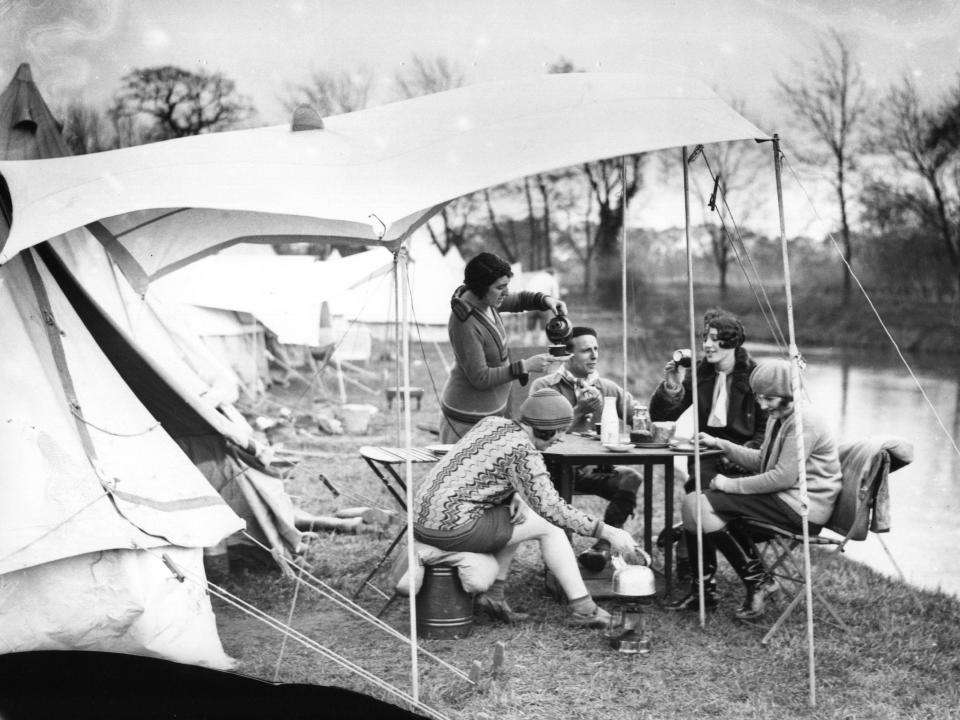
Friends and families would go camping to spend time together outside of their homes.
... but also a lot more work-intensive.
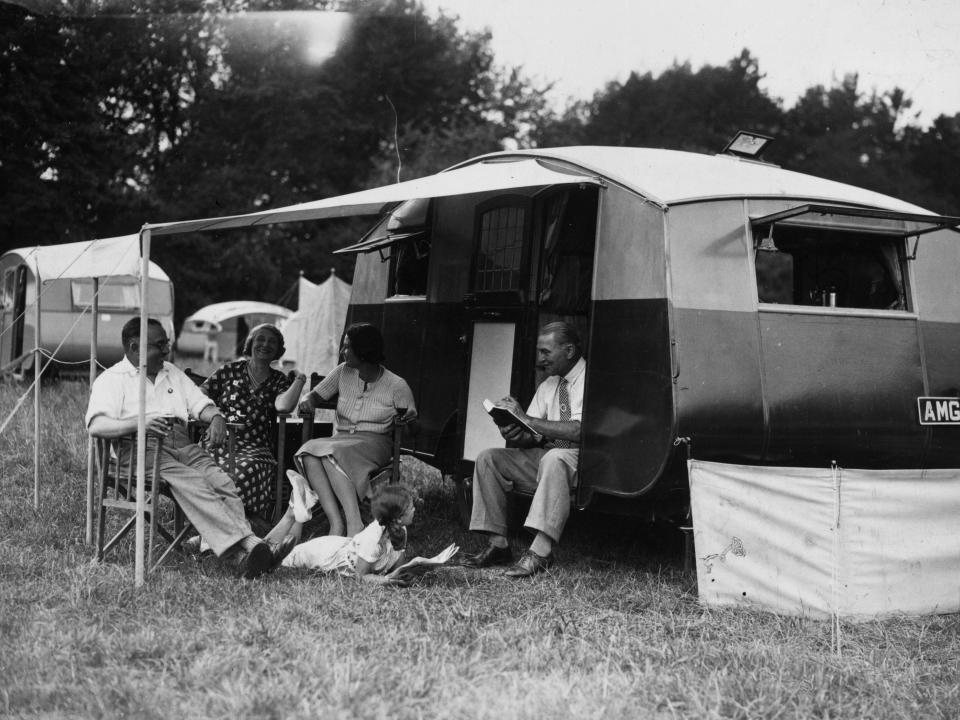
There was a lot more manual labor involved with getting set up and making food than in campsites of the future, which might have access to full kitchens or electricity.
Regular morning routines had to be done without a bathroom or mirror.
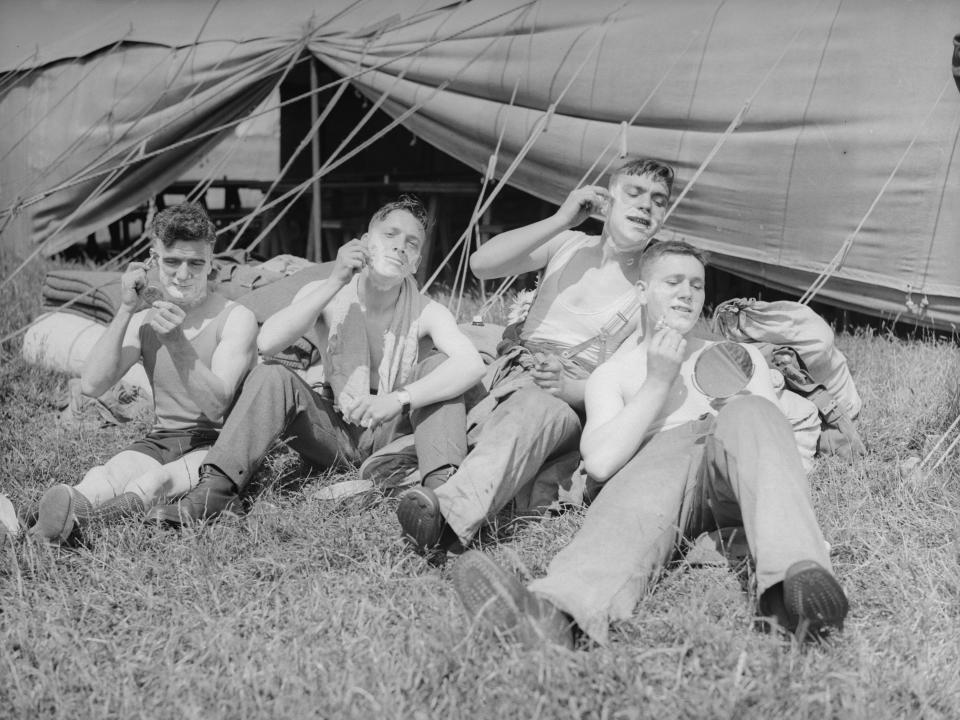
Basic grooming was still expected.
Even just making tea could be a chore.
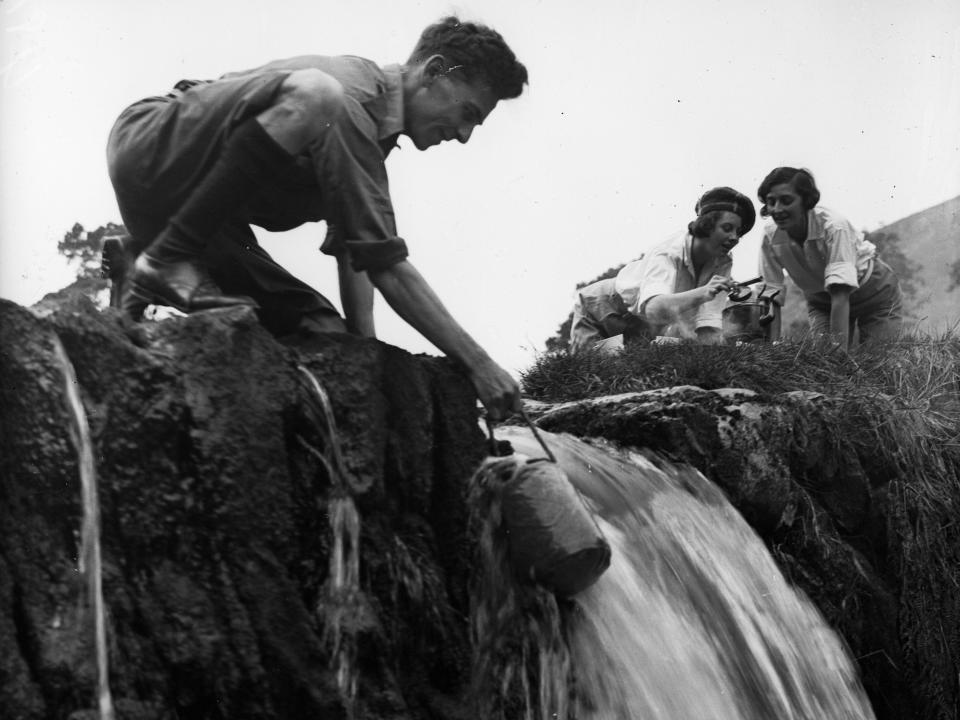
Campers had to gather everything from the outdoors if they didn't bring water or other supplies with them.
Hammers had to be schlepped to the campsite.
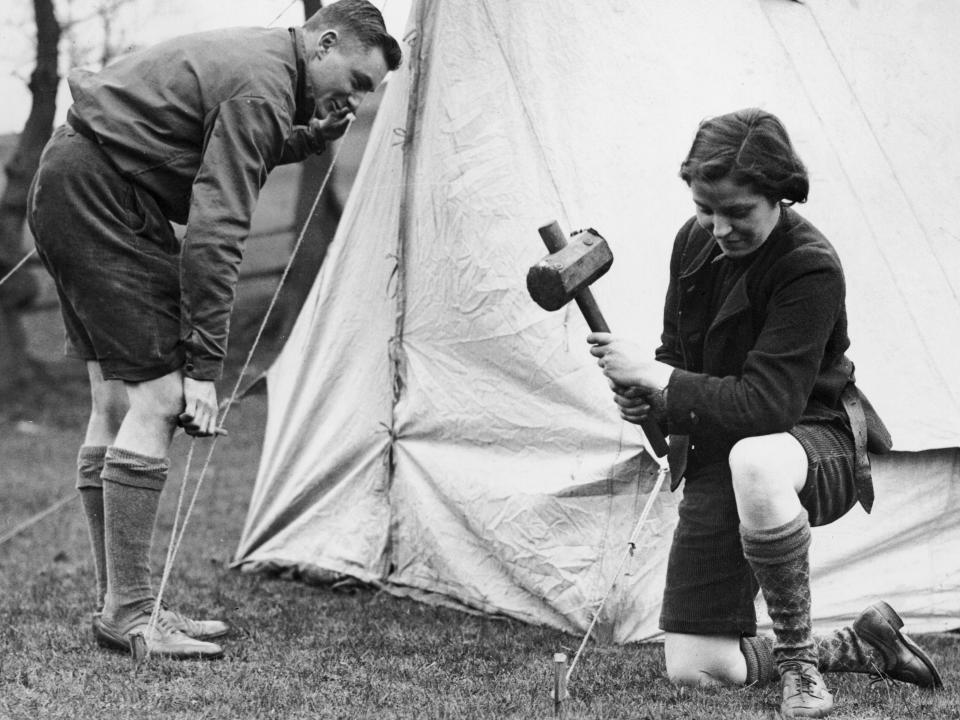
Tent pegs were often wooden, not plastic, and had to be hammered into the ground.
But the work was part of the fun.
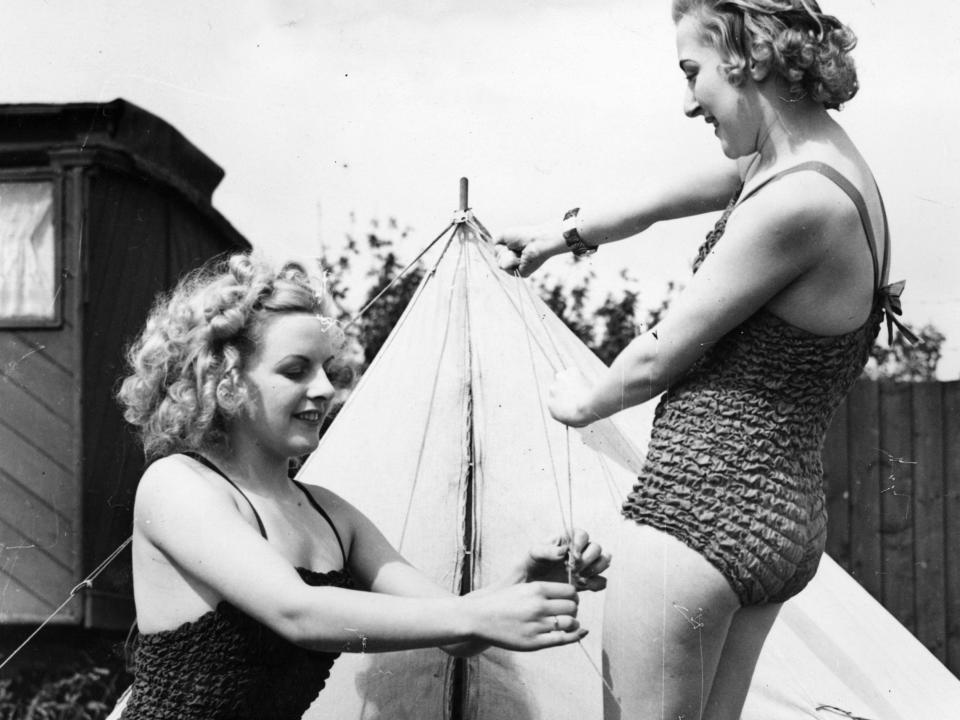
Part of the allure of going camping was the authenticity of living outdoors — even if just for the night.
People still found ways to make their camping trips a little more comfortable.
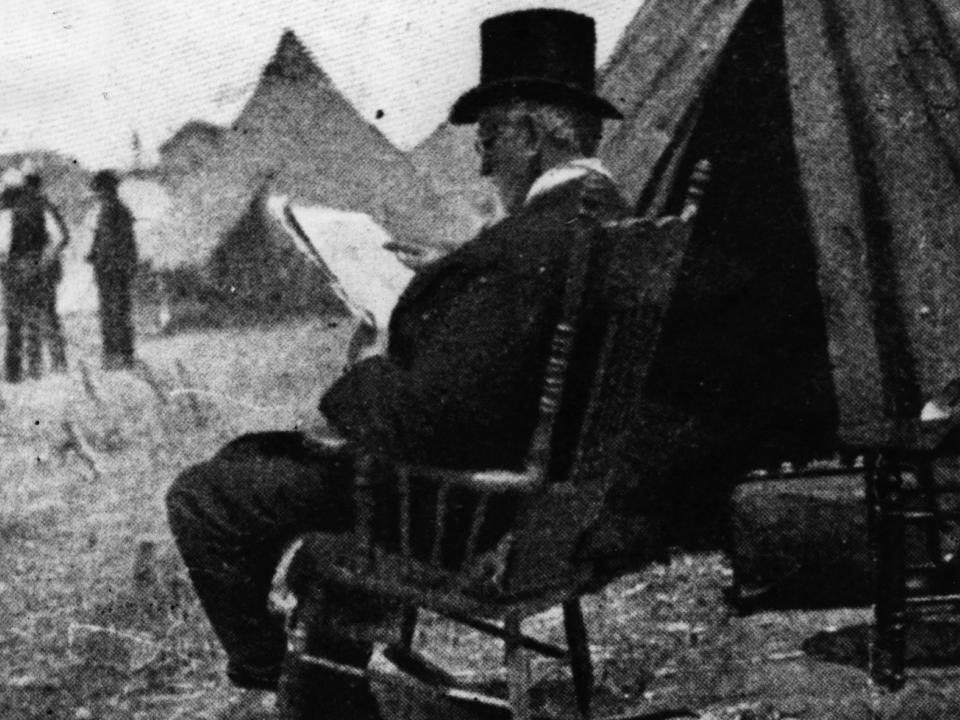
Campers would bring furniture, books, and other items from home to make their time in the great outdoors more comfortable.
Forget the paper plates — some campers brought actual porcelain dinnerware.
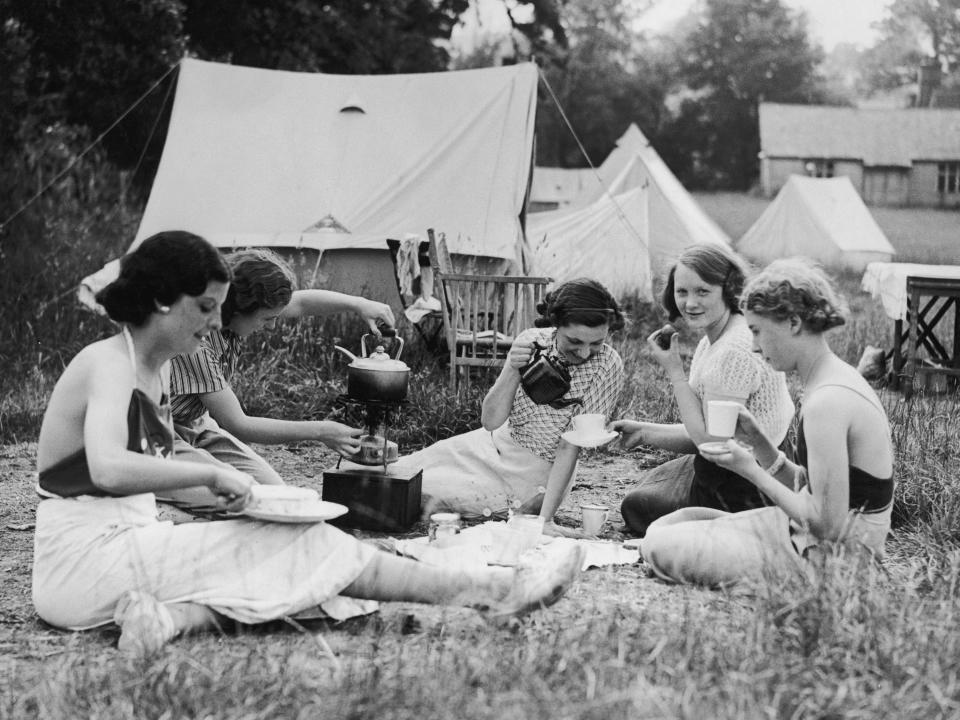
While this may seem impractical today, it certainly made for a more sophisticated camping excursion.
Early on, camping was often done out of necessity during long travels. But over time, it became a more common recreational activity for people.

The appeal of having no distractions while enjoying quality time with friends endures.
Boy Scouts went on camping trips every year after their establishment in 1910.
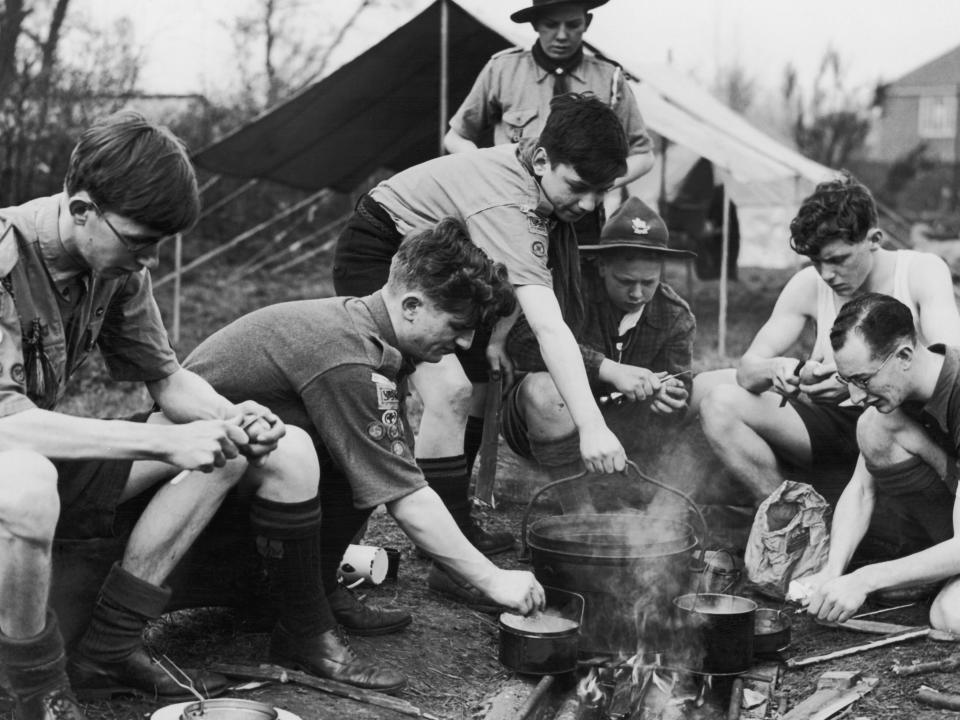
Campgrounds, as we know them today, weren't really established until the 1930s when the National Park Service developed "Recreation Demonstration Areas," according to the National Park Service.
The Girl Scouts were established in 1912, and wilderness survival was also at their core.
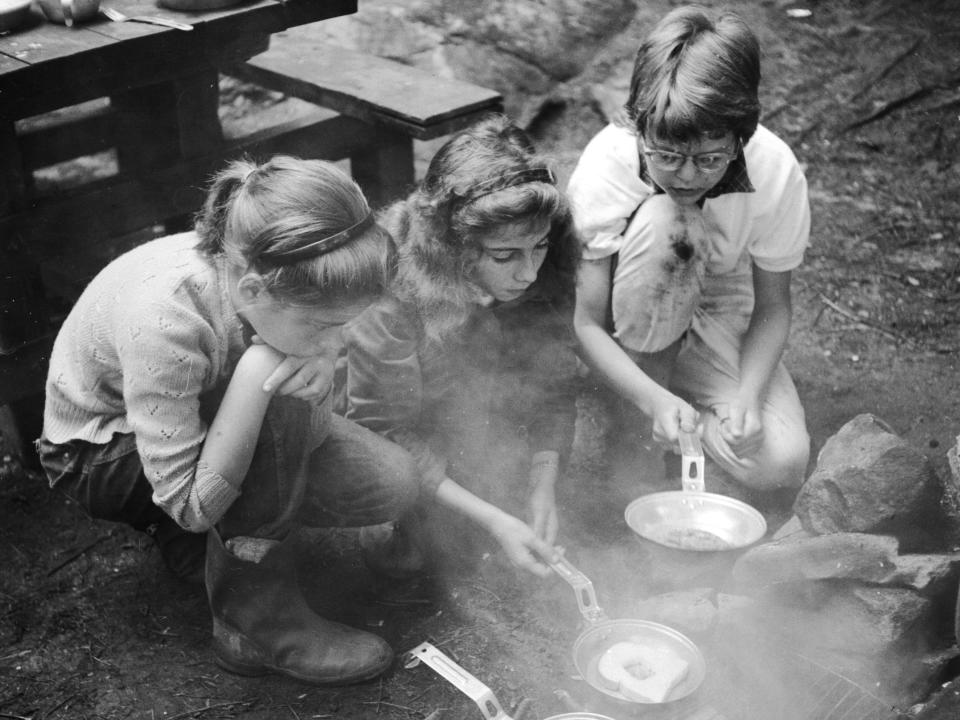
Apparently, the first official mention of s'mores appeared in a Girl Scouts manual in 1927, according to Reserve America.
As the years passed, camping became more involved.
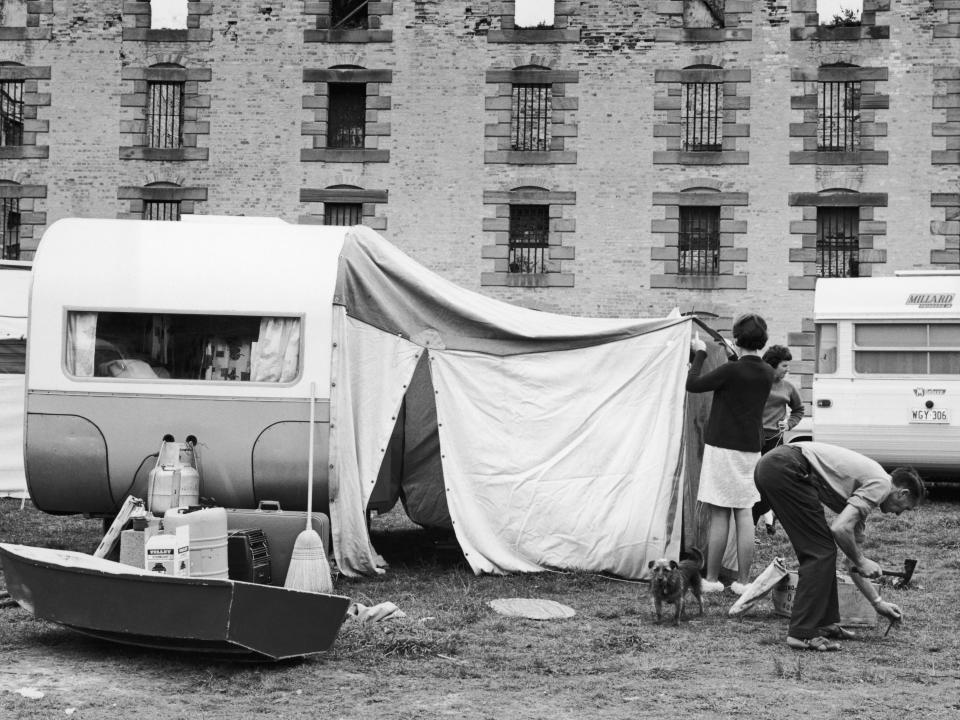
People started bringing more with them on camping trips.
Rather than just setting up tents, people began bringing RVs.
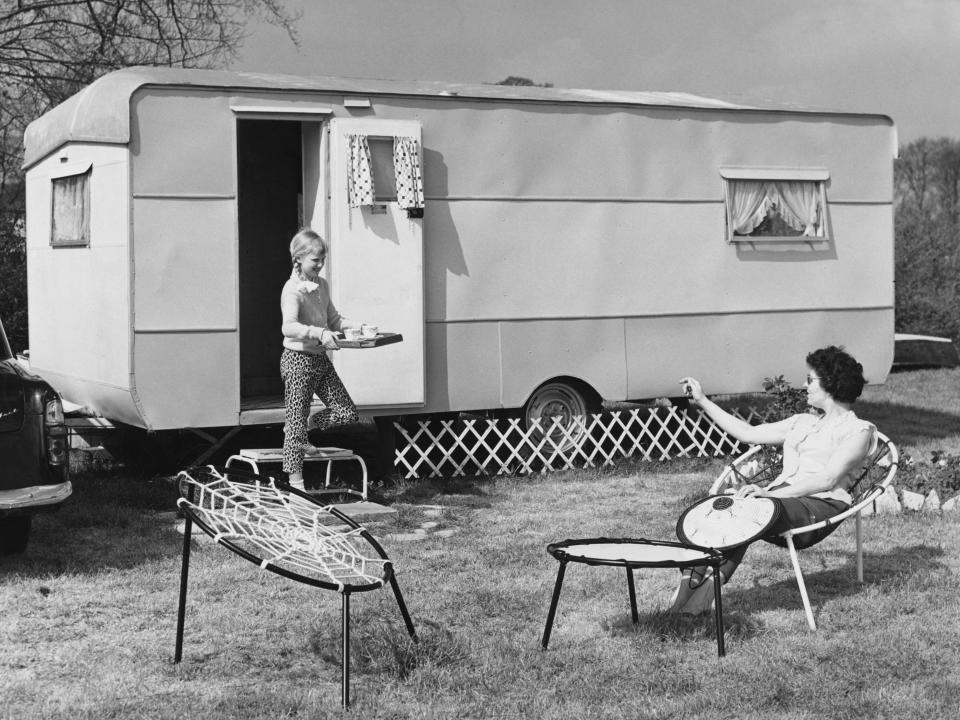
RVs have also evolved a lot. Starting as small cabins built onto the back of regular cars in the 1910s, they eventually evolved into homes, and even mansions, on wheels.
The famous Volkswagen Westfalia Camper was an instant classic for campers and road trippers alike.
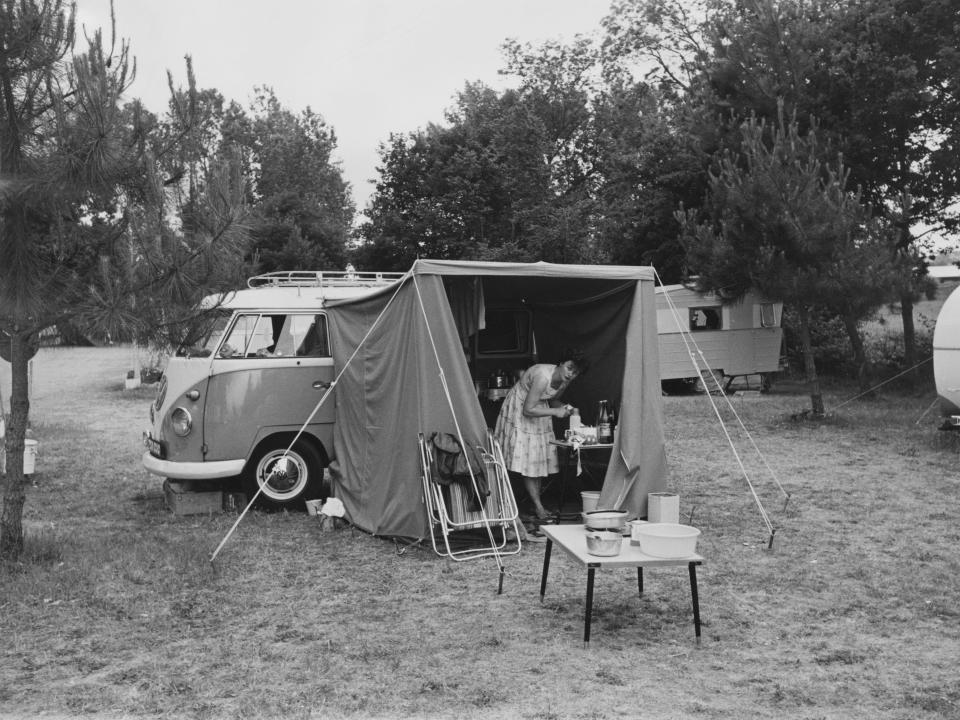
While the VW bus, as it is better known, came out in the '50s, it reached peak popularity in the '70s. It is one of the most iconic road trip vehicles in history, and synonymous with wanderlust.
Having camper vans meant being able to bring more of the luxuries of home, from barware ...
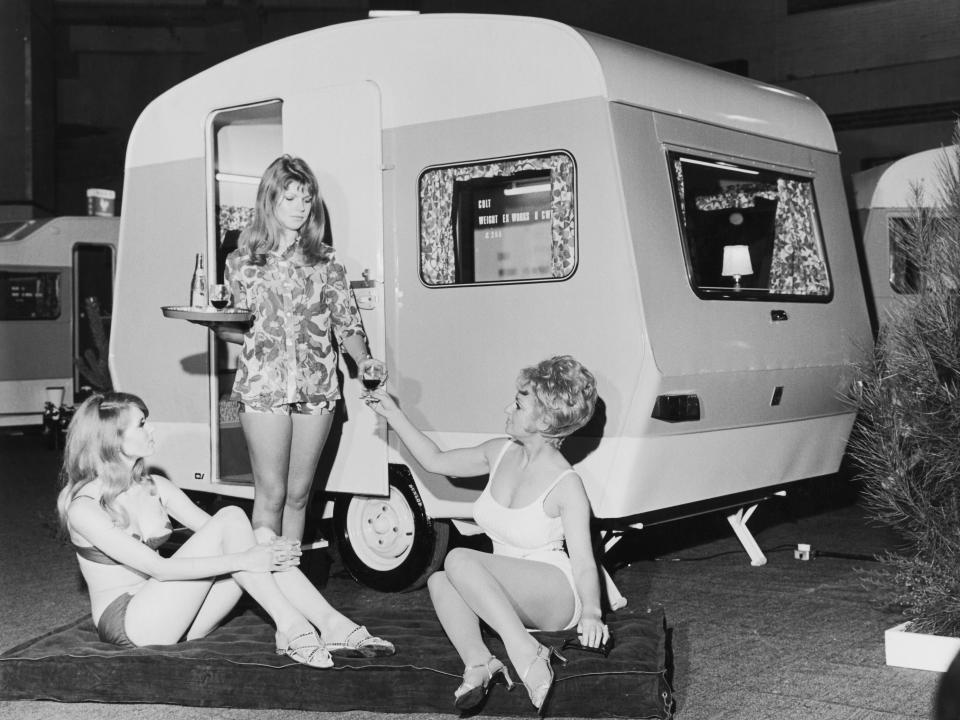
Camping, as a result, became easier.
... to decorative lanterns.
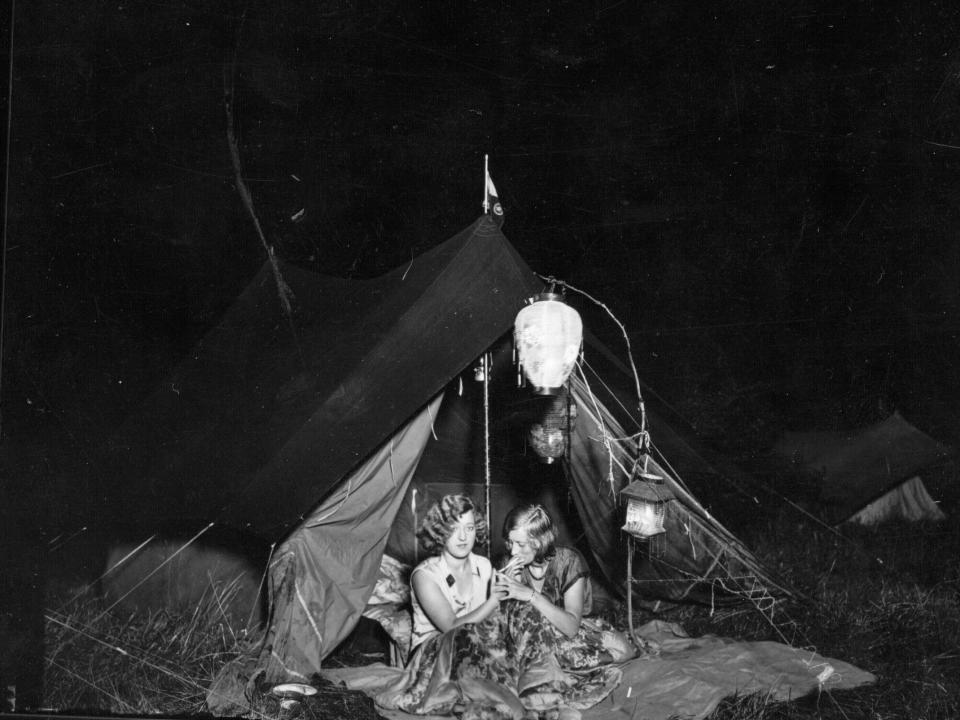
Who says camping needs to mean roughing it?
Camper vans also allowed campers to be more comfortable.
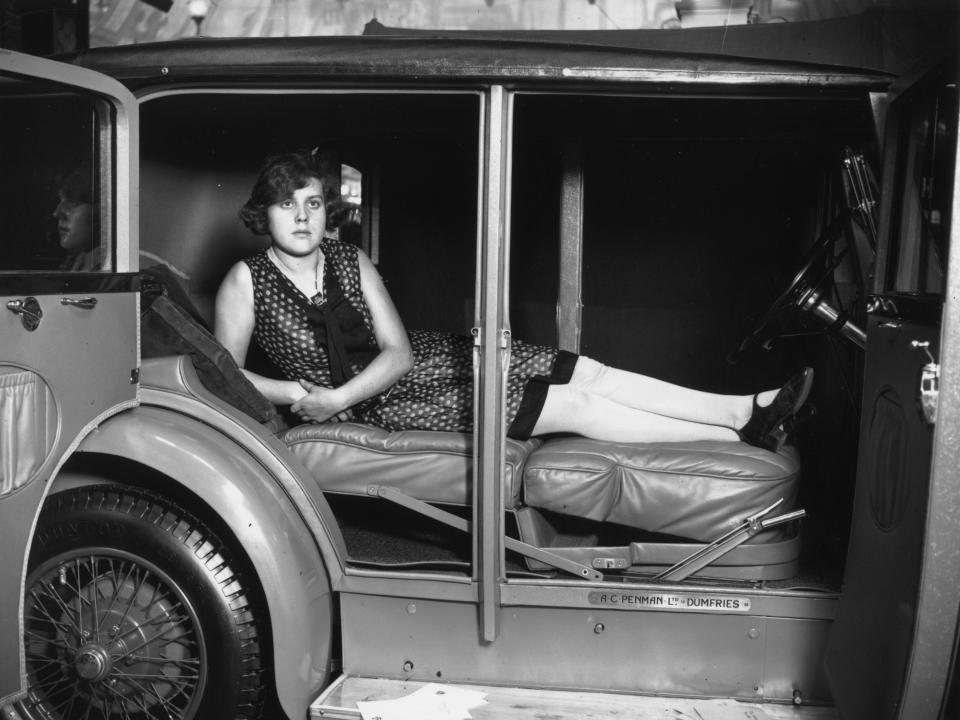
Instead of sleeping outside, you could have some protection by staying inside your car, or even kick back on a seat that converted into a bed.
One could now avoid truly living in the elements.
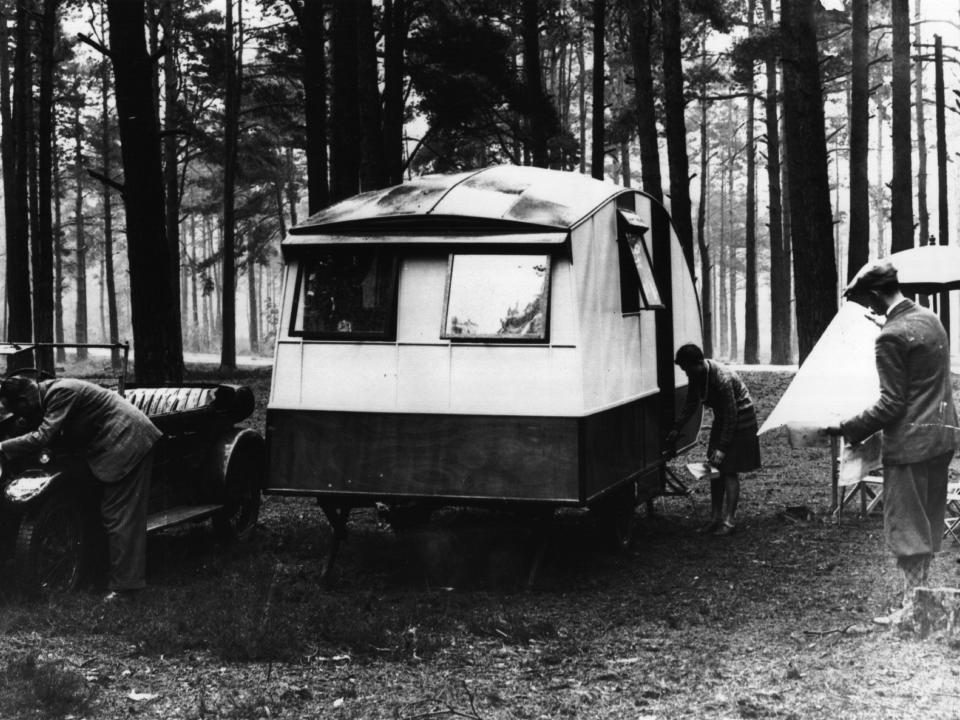
Everyone wants to be close to nature ... but not too close.
Once campers were able to have more cover from nature, they did that instead.
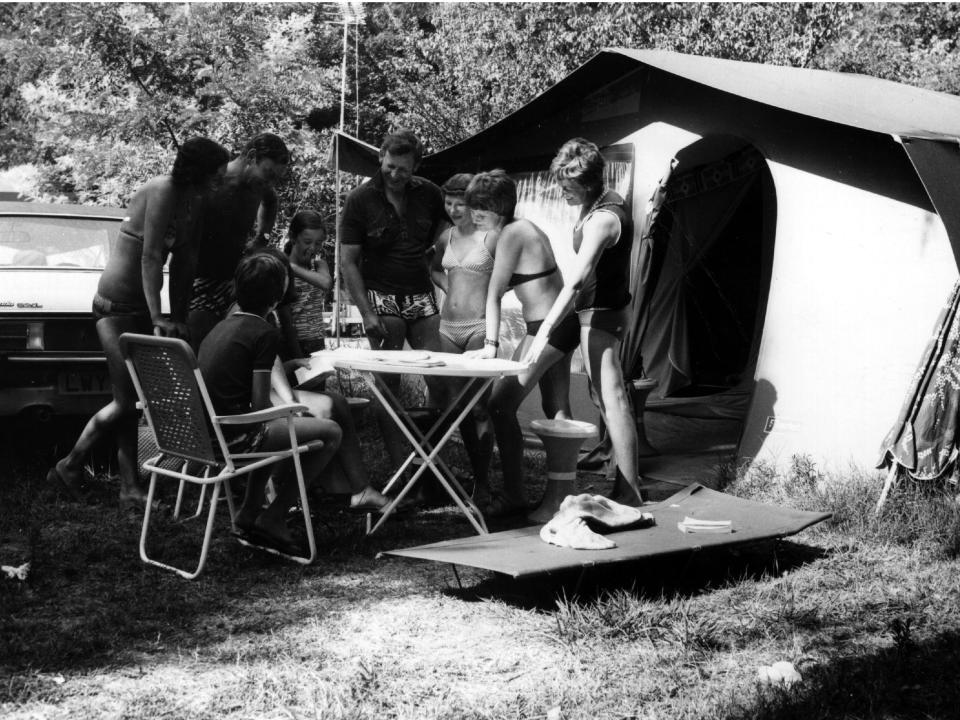
Camping became more comfortable, meaning campers could now spend days or even weeks at a time in the wilderness.
Camping also became a way to get good seats at events.
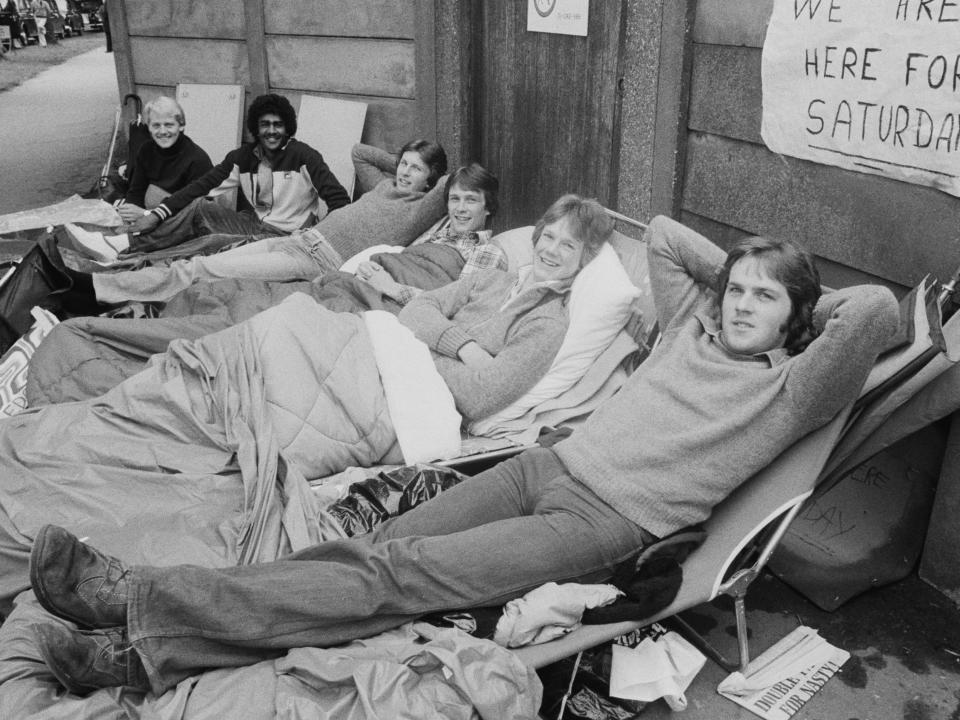
People sometimes spent days camping outside ahead of an event.
People would camp to stake out good spots at festivals.
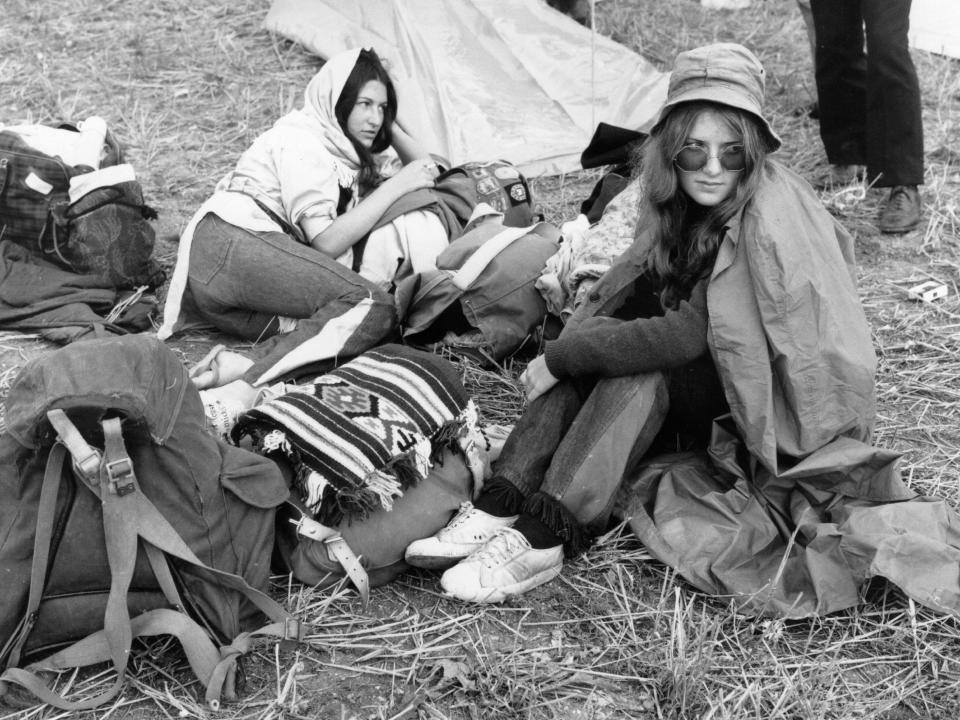
Camping is still used as accommodation at modern festivals like Bonnaroo.
By the 1960s, camping was no longer just a necessity — it was a popular recreational activity.
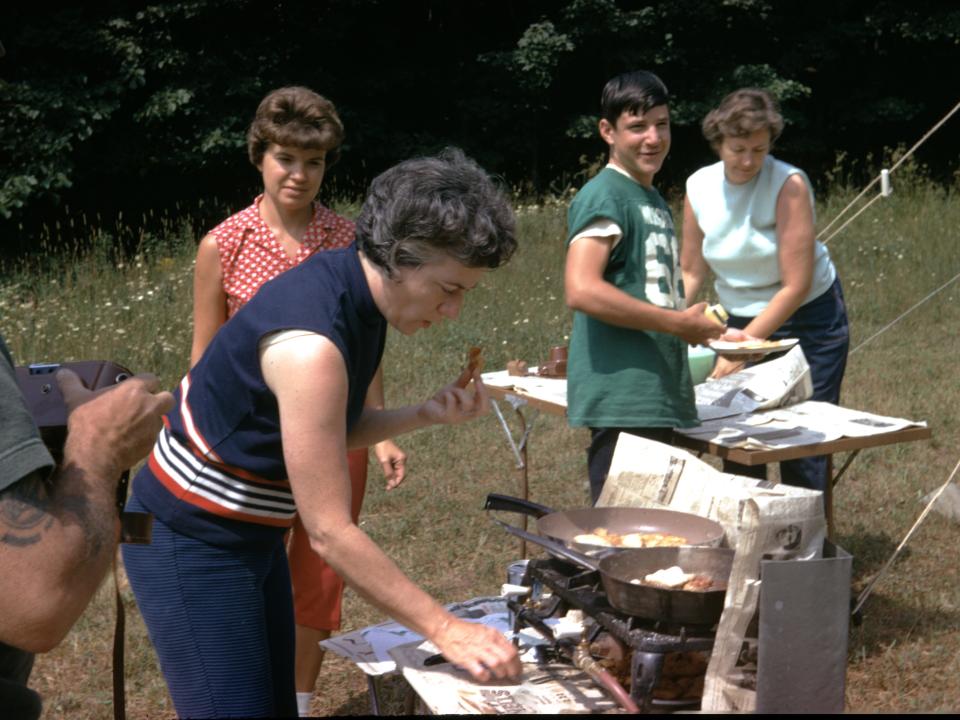
However, many campsites were still segregated, meaning only white visitors had access to certain parks and campgrounds.
Writers of the Beat Generation popularized camping the old-fashioned way in the '60s.
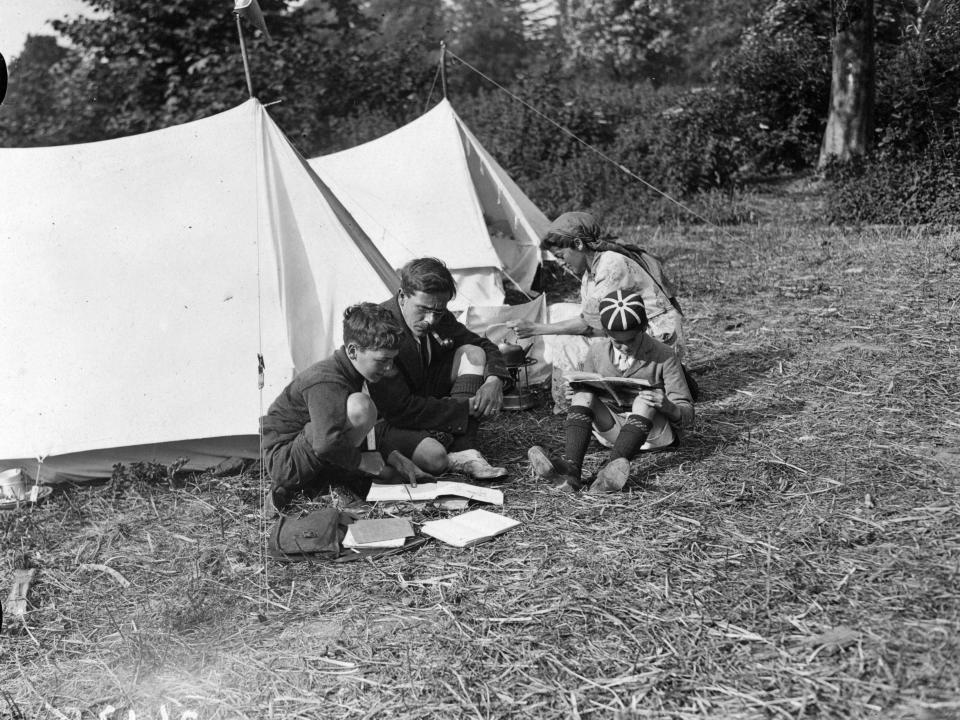
The Beat Generation was a literary movement made up of a group of writers who wrote about American culture using a stream-of-consciousness writing method.
Jack Kerouac, a popular writer of the time, wrote about the times he slept outside on the beach in Big Sur, which he later published in his 1962 novel "Big Sur."
The Beat Generation romanticized the idea of living on the road.
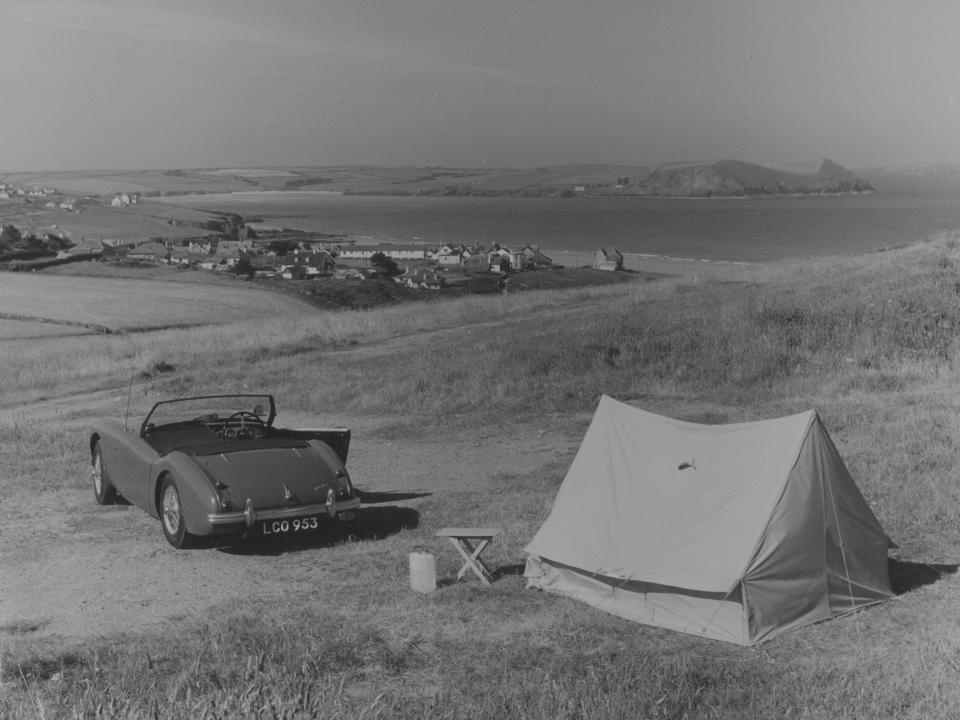
To this day, their raw stories about traveling constantly and taking odd jobs to survive encourage readers to live more in tune with nature.
Many state and national parks upheld segregation until the passing of the Civil Rights Act of 1964, limiting access to these outdoor spaces for Black citizens.
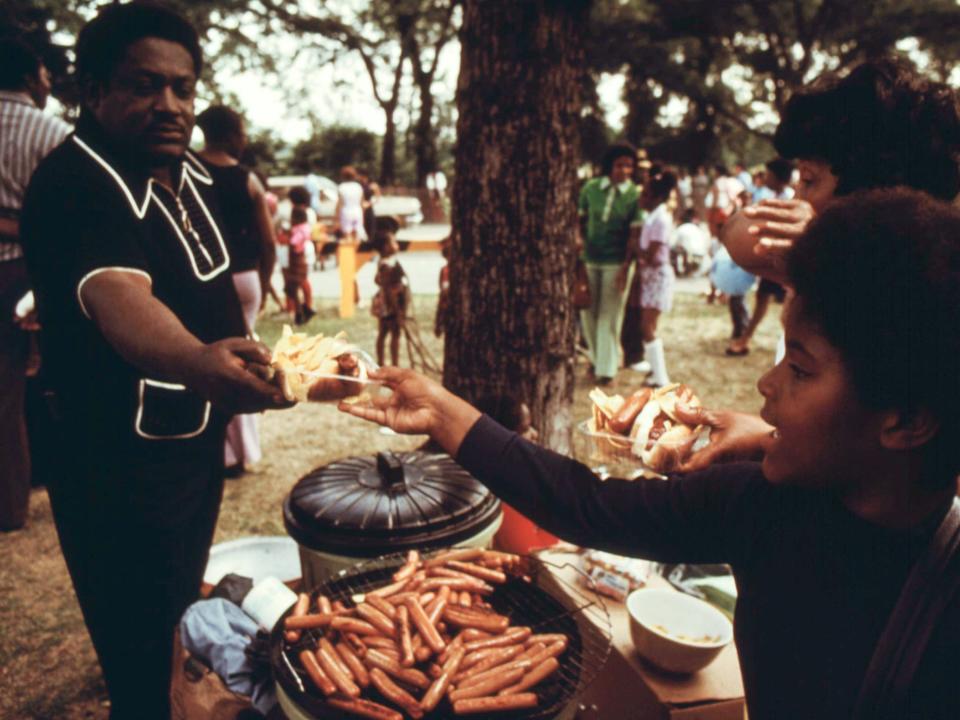
However, Black people and families still made use of desegregated parks and campsites or used parks and campgrounds that were designated only for Black citizens. These parks, like Virginia's Shenandoah National Park, became places of community for Black families and received thousands of visitors each year, Atlas Obscura reported.
After state and national parks were mandated to be desegregated, many of the Black-only parks closed or were absorbed by surrounding parks, according to the National Park Service.
Traditional camping will likely remain a popular activity for years to come, regardless of technological advancements.
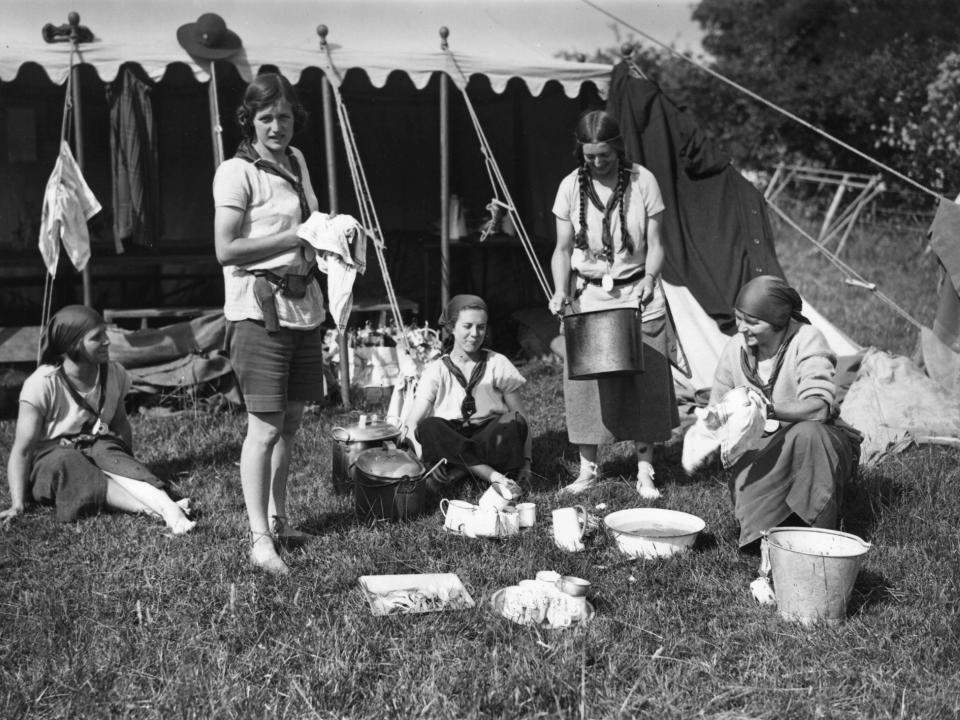
In fact, the more dependent we become on technology, the more people might like to retreat into nature for a few days.
Camping may keep changing, but it will never go out of style.
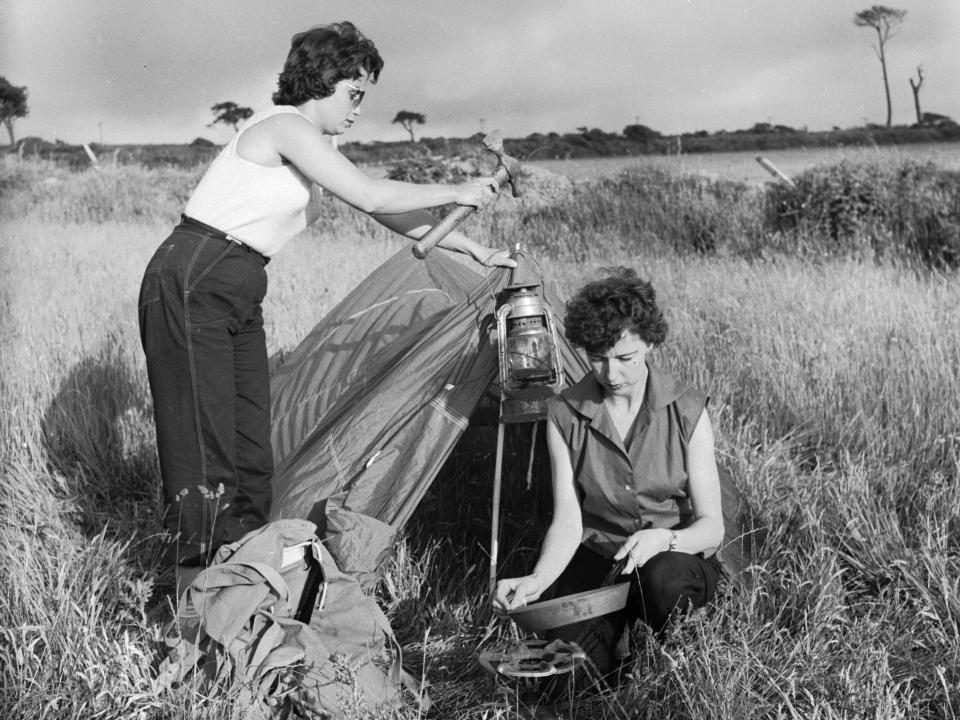
There's been a statistical rise in camping over the past decade. According to Kampgrounds of America's 2024 Camping and Outdoor Hospitality report, active campers have increased by 68% in the last 10 years, and six out of 10 US households identify as campers.
As families try to find affordable summer activities due to the rising cost of living, we may see even more campers seeking the great outdoors this summer.
Read the original article on Business Insider

